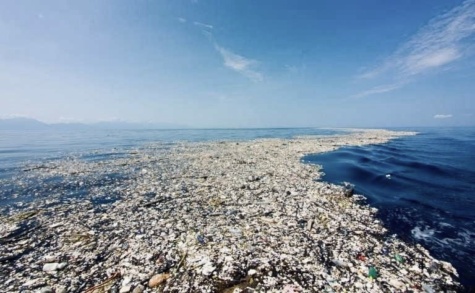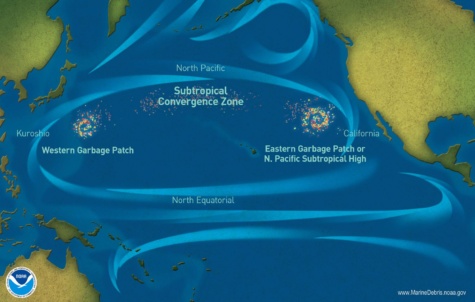
Sosie Casteel | Head Editor
March 18, 2022
Due to the excessive levels of plastic pollution over the past few decades, a mass of trash the size of a small country has accumulated in the central Northern Pacific Ocean. It has been officially named the Great Pacific Garbage Patch, also known as the Pacific trash vortex.

Contrary to what many believe, the Great Pacific Garbage Patch is a combination of the Eastern Pacific Garbage Patch and the Western Pacific Garbage Patch which are bounded together by a convergence zone where warm water from the Pacific Ocean meets cold water from the Arctic Ocean. This zone performs like a conveyor belt for trash and traps it in certain areas, allowing it to accumulate into massive patches.
The patch is surrounded by the North Pacific Subtropical Gyre, or a “large system of swirling ocean currents” as defined by NOAA. Trash reaches the Pacific Ocean and can become easily swept into the vortex to be added to the large patches.
Cleanup efforts have begun, mainly by a nonprofit organization named The Ocean Cleanup. However, many marine biologists and environmentalists have discounted their actions as a scam due to a lack of sound photographic evidence and minimal scientific support.
The scandal has prompted many to consider whether or not cleaning up the Great Pacific Garbage Patch is a good idea in the first place. If cleaned, plastic will only accumulate again in the area immediately after. Continual cleanup efforts are a possibility, however, many believe that the emissions from the boats and the human interruption of the area will be more destructive than beneficial.
Cleanup companies tend to use large nets to catch the trash and dump it onto large boats for transport. This method has the same effect as trawling fishing nets, which wreak havoc on marine ecosystems. The large nets scoop up tons of trash, but also catch unsuspecting fish and even marine mammals.
“I think it’s crazy we got a plastic hotspot twice the size of Texas,” senior Joseph Sanchez said. “We really need to push against companies who are using too much plastic materials.” Cleanup efforts are considered the least efficient way to reduce pollution’s impacts on ocean ecosystems. Once cleaned up, the water will only become polluted again very quickly based on our current practices.
Scientists are instead calling for greater enforcement of plastic use to slow the pollution of the oceans. “There isn’t really a solution as of now, other than getting rid of plastic,” junior Rory Catsimanes said. Cleanup efforts do not reduce our dependence on single-use plastics nor the unnecessary levels of plastic waste.
In 2018, “Beat Plastic Pollution” was the theme of United Nations World Environmental Day. Many members of the UN made extensive goals to reduce their contributions to global plastic pollution. India set out to ban single-use plastics by 2022; the ban is still set to go into effect July 1. The United States continues to lag behind its allies with only a plastic straw ban that developed into more of a trend than an active effort to be environmentally conscious.
Cleaning the Great Pacific Garbage Patch is not a beneficial step to take nor an efficient one. In order to combat the ever-growing problem, regulation and an overall reduction of plastic usage are necessary.

It is very disturbing to see such huge amount of plastic trash in the ocean. We need to remove it, leaving it there is not acceptable.